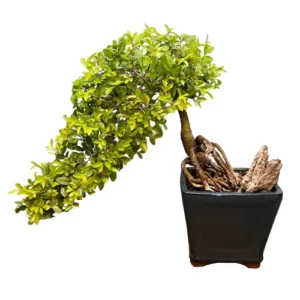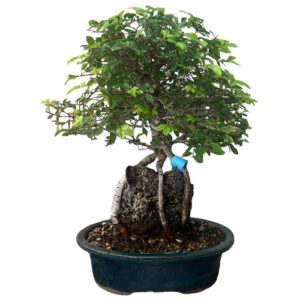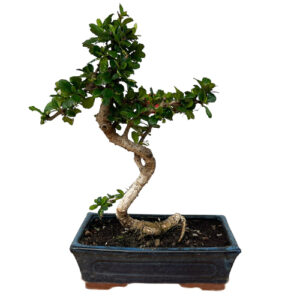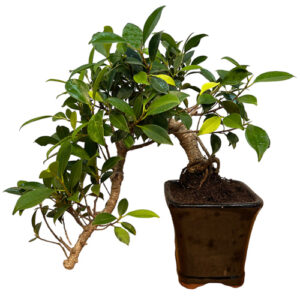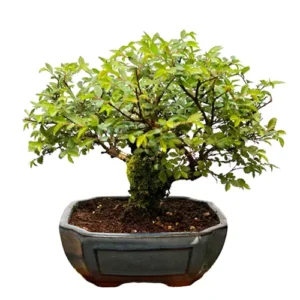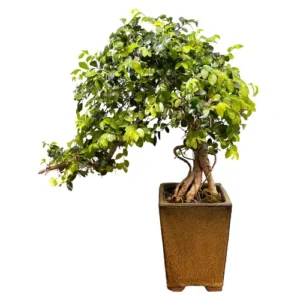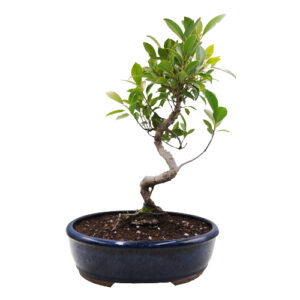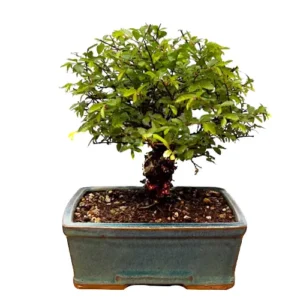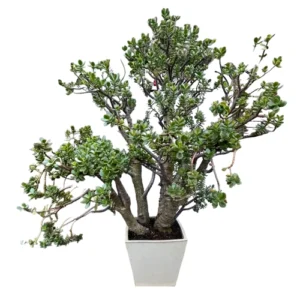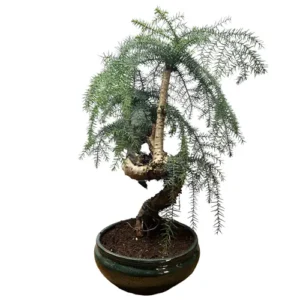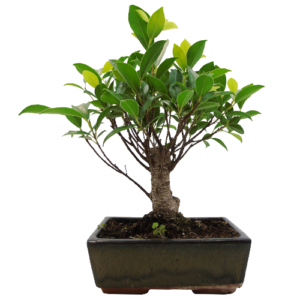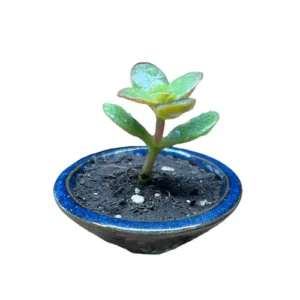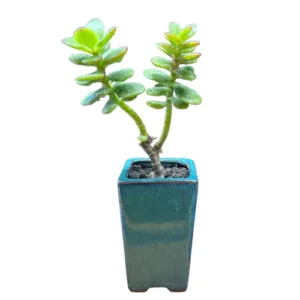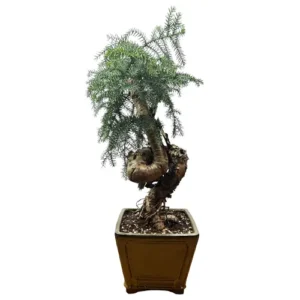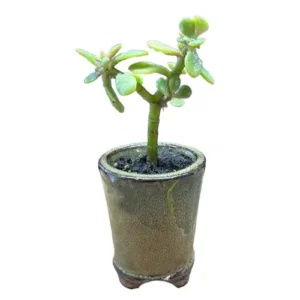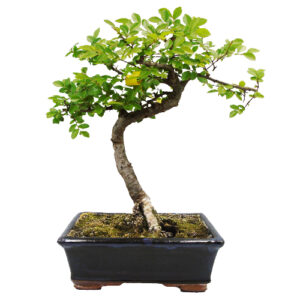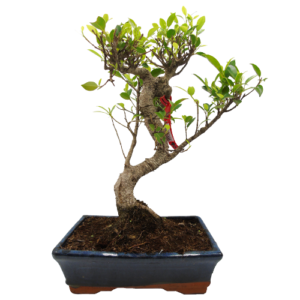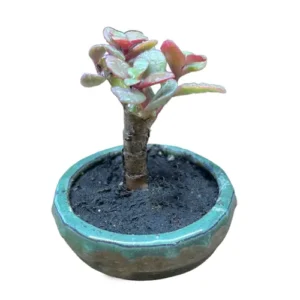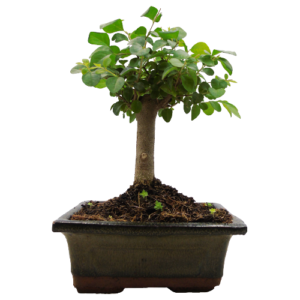Delonix regia
Flame Tree Bonsai
Native to Madagascar. Also known as the Royal Poinciana, this flamboyant legume blossoms arresting fire-red flowers from spring through summer. This bewitching bonsai can be a challenge to maintain but its awesome flori make its demands worth it.
Flame Tree Bonsai Care Tips
Placement
Being a tropical species, Flame Tree bonsai requires 15 to 30 degrees C temperatures. It also demands plenty of sun and much wind protection. Only place outside in a climate where the night temperatures do not fall below 10 degrees C. If cultivated in the UK, this is an indoor bonsai that requires heating and lighting considerably. Consider a heated conservatory or greenhouse and LED lighting to provide the right conditions.
Watering
During the summer, Flame Tree Bonsai require a lot of watering as it is the plant’s growing season. A deep watering once a week should work a charm, water when the soil gets dry. Be mindful to not overwater. After the leaves have fallen in winter, Flame Tree bonsai needs much less water.
Feeding & Fertilising
Across the growing season, apply solid organic fertiliser every month once a month. Once a week liquid fertiliser is also an alternative during the growing season. A balanced feed is advised to promote the plant’s vigour.
Pruning & Wiring
Pruning your bonsai is important not only to create or maintain an aesthetic style but to also ensure optimal health. In summer, trim your Flame Tree bonsai regularly to maintain its umbrella crown. Hard pruning, if necessary, should be done at the start of Spring.
Wire shoots and branches when they are young. Carefully remove the wire in good time to stave off damage to the bark. We recommend using wires with a thickness that matches the thickness of the branch: if the wire you choose is too thick you will damage the bark. If it is too thin, it won’t be effective.
Repotting
Repotting your tree is an important way to provide a fresh and suitable soil mix and ensure appropriate root health. Repot your Flame Tree bonsai every other year when the pot its kept in is beginning to look small.
Trees that are ready for repotting will require root pruning, a suitable new pot and appropriate soil mix.
When repotting, do not cut back the root mass by a large amount, and choose a well-draining soil mix that has a neutral or slightly higher PH value of 5-6 but not over 7. We tend to use a mixture of different speciality bonsai soils on our trees. Every species is different so please contact us for free soil-mix advice or to take advantage of our repotting service.
Bonsai make for a one-of-a-kind indoor plant offering elegance, nature and art all in one minute form. Across an array of exquisite and erudite species, they all demand their own specific care and cultivation needs in order for their beauty to flourish. We have an extensive library of care guides for indoor bonsai trees so you can make an informed and considered choice. It’s not about selecting the perfect bonsai, it’s about selecting the perfect bonsai for you.
Flame Tree Bonsai - Typical Queries
How to propagate Flame Tree bonsai?
Flame Trees are best propagated with seeds. When using dry seeds they need to be kept in lukewarm water for a few days to swell. Once sown, keep their temperature a consistent 20 degrees C. The seeds will show growth after 3 weeks.
Do Flame Tree bonsai get pests and diseases?
Flame Tree can fall prey to scale, this is particularly true in the winter. Caterpillars and shoot borers may also intrude. They can be removed by hand as well as the correct insecticide. Root rot can be brought on by too cold a placement or overwatering. If root rot occuers remove damaged roots, replant in fresh soil.
Can you keep a Flame Tree bonsai outdoors?
Due to its need for wind protection and temperature drop protection, it’s not advisable to keep a Flame Tree bonsai outdoors. This should only be done in climates providing consistent stable warmth. Brightness is also a key factor. A more consistently light-free environment will leave a Flame Tree dormant.

